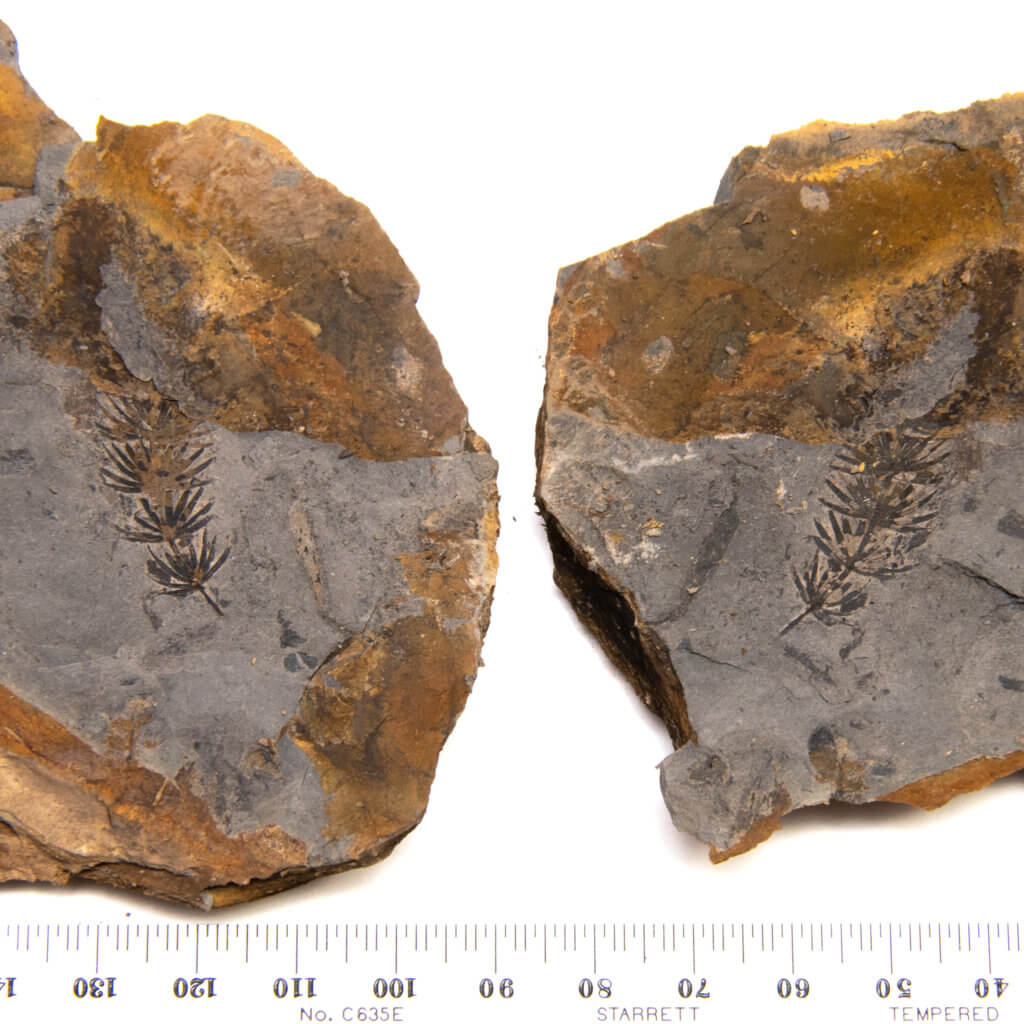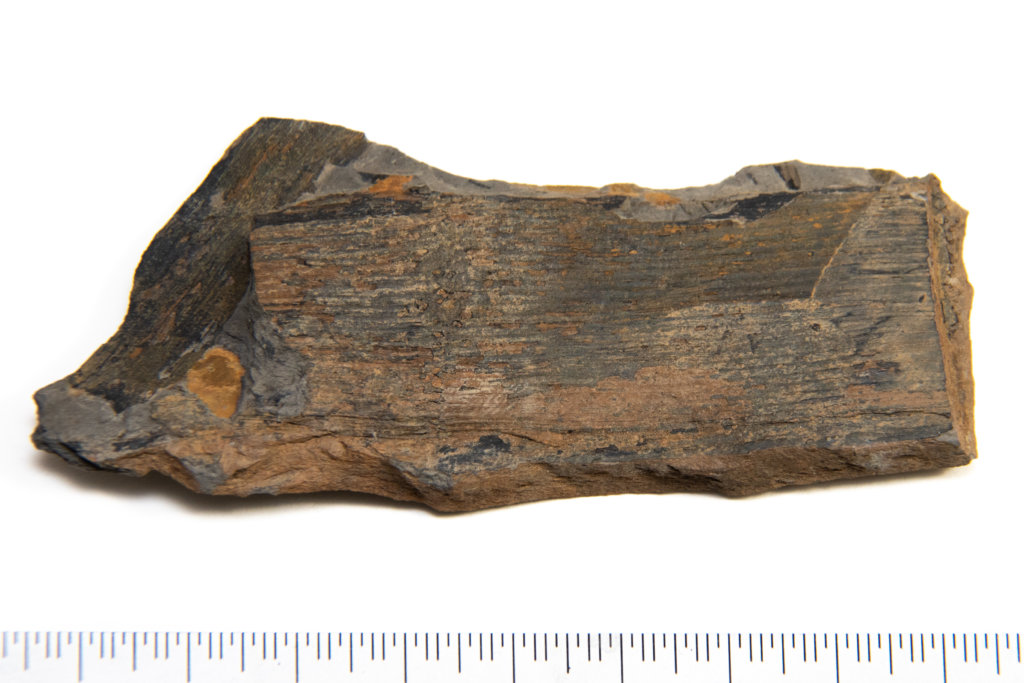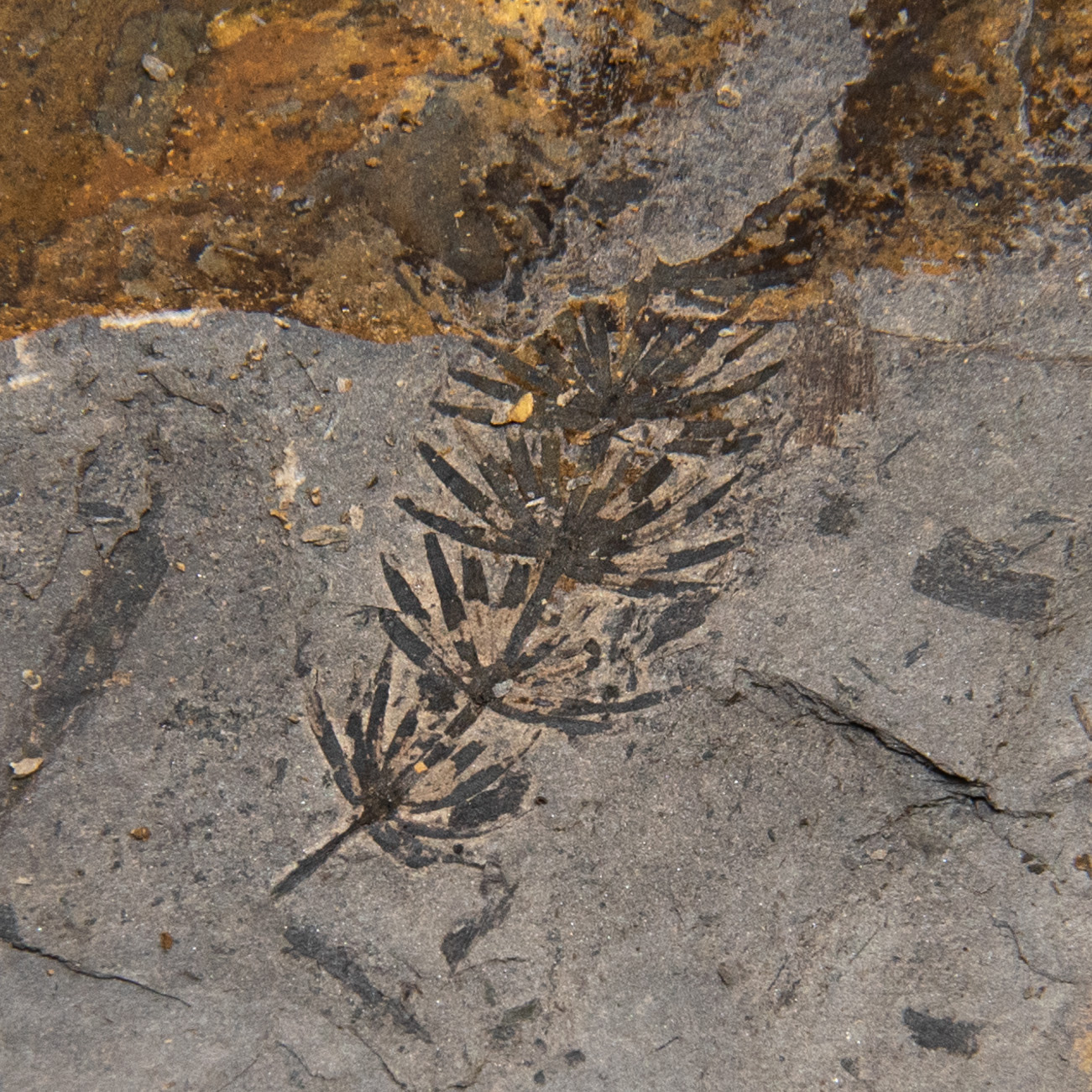Asterophyllites have been a genus of fossil plants that I have been hunting for since I started collecting fossils locally. Today I was able to recover my first specimen of one. These are the branches that come out at the nodes of the genus Calamites. While these are two separate genera, they are the same plant, members of the Calamitaceae family. Workers first recovered and named each piece individually and made the connection later in the future. However, today they remain separate genus in identification.
Asterophyllites
First, the specimen of Asterophyllites. This was recovered with a shale split, showing a stem and at least 5 groups of spidering leaves. There is likely a bit more available, but the shale is not entirely fissile and it’s difficult to expose more without risk of damage. The leaves of this genus appear in clusters at spaced nodes. The genus Asterophyllites is distinguished from other forms, such as Annularia, by its upward cupped slender leaves. Annularia will have more of a circular starburst of leaves that are connected by a ring of leaf material at its attachment site.
Regardless of being a separate genus, if found connected to branches identified as Calamites, the whole specimen should be identified as Calamites.

Calamites
The next photos are two specimens of Calamites. I have found several examples of these in the local shale, situated below the Brush Creek limestone. The two below are recent finds, recovered in October of 2021. Different species of calamites can be determined by examining how the groves intersect with the nodes. Some genera attach on the circular branch attachment, others attach in between two attachments.


While these specimens are easy to identify at the genus level, it appears that the identification as the Class or Phylum level has changed recently. Wikipedia states that: “The genus Calamites is placed in the family Calamitaceae in the plant class Equisetopsida”. The family is the same as I have documented, but the class I have is Polypodiopsida. Plant fossils can be confusing to document as they don’t use the classic Phylum, Class, Order, Family arrangement in modern times. Plants use Clade and Division. Many modern research articles will use the Super and Sub prefixes to further sharpen taxonomic classification.

